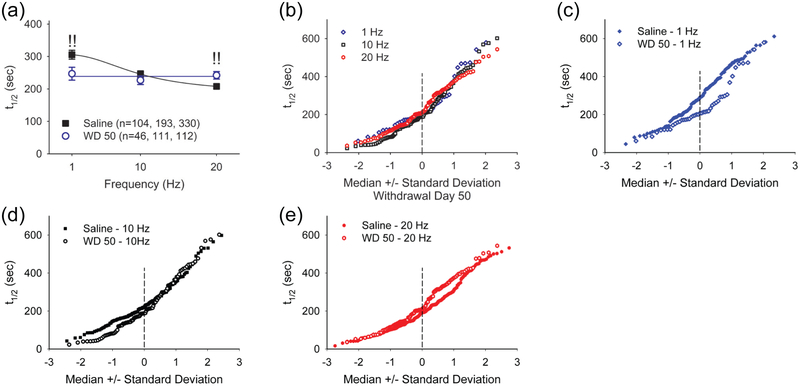FIGURE 6.
Withdrawal from repeated amphetamine use produces presynaptic potentiation at low cortical stimulation frequencies and presynaptic depression at high stimulation frequencies. (a) Average half-times of FM1-43 release in slices from saline- and amphetamine-treated mice on WD 50 following cortical stimulation at 1 Hz, 10 Hz, and 20 Hz. Cortical stimulation produces a frequency-dependent increase in FM1-43 release (lower t1/2) in slices from saline-treated mice. Increasing frequencies have little effect on FM1-43 release kinetics in slices from amphetamine-treated mice on WD 50. Compared to saline-treated mice, presynaptic potentiation occurs at 1 Hz and presynaptic depression is seen at 20 Hz. !!p<0.01, Mann-Whitney. The number of puncta (n) is indicated in parenthesis. (b) The normal probability plot shows similar release kinetics of individual cortical boutons in slices from amphetamine-treated mice on WD 50 following cortical stimulation at 1 Hz, 10 Hz, and 20 Hz. (c) Destaining half-times of individual cortical boutons in slices from saline-treated mice are compared to those obtained in slices from amphetamine-treated mice on WD 50 in response to cortical stimulation at 1 Hz, (d) 10 Hz, and (e) 20 Hz. Presynaptic potentiation occurs at 1 Hz stimulation, while presynaptic depression occurs at 20 Hz.

